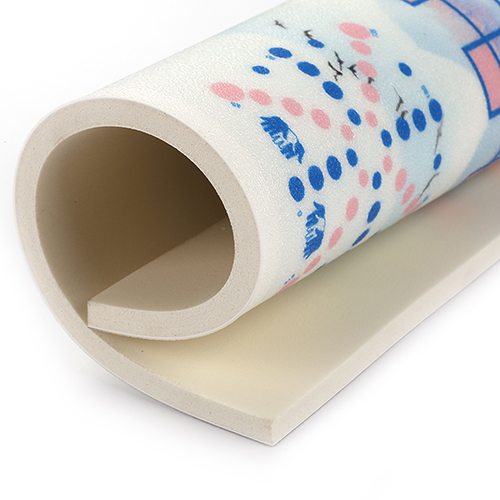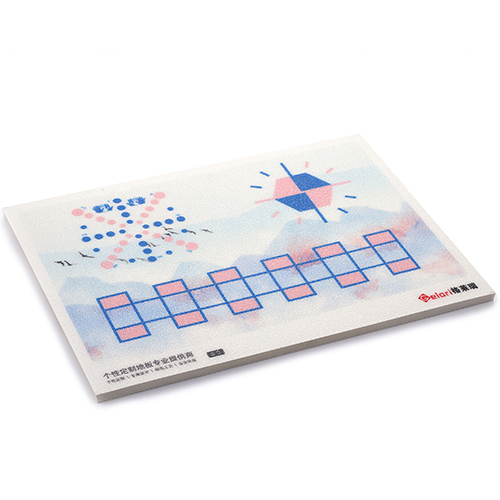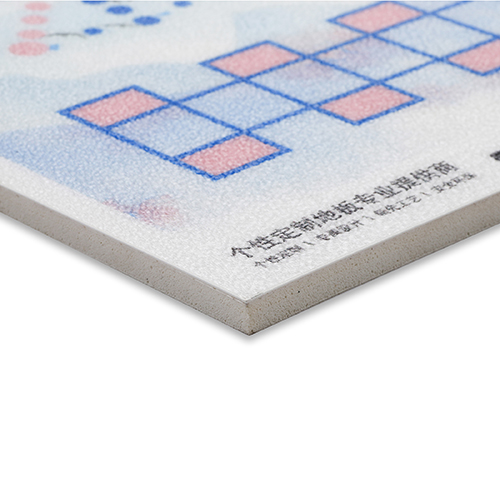Aug . 22, 2025 11:40 Back to list
Premium Maple Flooring: Durable Hardwood & Gym Solutions
Understanding Maple Flooring: A Strategic Overview for B2B Applications
In the realm of high-performance and aesthetically critical flooring solutions, maple flooring stands as a benchmark for durability, resilience, and classic appeal. This comprehensive guide delves into the intricate aspects of maple wood flooring, from its manufacturing precision and technical specifications to its diverse application scenarios, strategic advantages, and considerations for procurement in B2B contexts. Our aim is to provide decision-makers, architects, and facility managers with the authoritative insights necessary to select optimal flooring solutions that meet stringent performance and aesthetic criteria.
The demand for premium wood flooring, particularly in sports facilities, educational institutions, and high-end commercial spaces, continues to grow. North American Hard Maple (Acer saccharum) is predominantly favored for its unique combination of hardness, fine grain, and excellent shock absorption properties, making it an ideal choice where longevity and user experience are paramount. This article explores the nuanced technical details and strategic benefits that position maple flooring as a superior choice compared to alternative materials, including various types of PVC and synthetic options.
Manufacturing Precision: The Process Flow of Maple Flooring
The production of high-quality maple flooring is a meticulously controlled process, beginning with sustainable forestry practices and culminating in precision-engineered planks. This multi-stage process ensures that the finished product not only meets but often exceeds industry standards for performance and longevity.
Materials and Sourcing:
- Wood Species: Primarily Northern Hard Maple (Acer saccharum), renowned for its tight grain and exceptional hardness (Janka hardness rating typically 1450 lbf).
- Sustainable Sourcing: Lumber is sourced from responsibly managed forests, often adhering to certifications like FSC (Forest Stewardship Council) to ensure environmental stewardship.
Manufacturing Processes:
- Kiln Drying: Rough-cut maple lumber undergoes precise kiln drying to achieve an optimal moisture content (typically 6-9%). This critical step prevents warping, shrinking, and expansion after installation, ensuring dimensional stability.
- Milling and Profiling: Dried lumber is milled into rough planks, then planed and precisely cut into specific dimensions (e.g., 2 1/4", 2 1/2", 3 1/4" widths, standard thickness like 3/4" or 2" for specific applications, often referred to as 2 maple flooring for specific plank dimensions). Tongue and groove profiles are cut with exacting tolerances using advanced CNC machinery, ensuring tight, seamless joints.
- Grading: Planks are visually inspected and graded according to standards set by associations like the MFMA (Maple Flooring Manufacturers Association) or NOFMA (National Oak Flooring Manufacturers Association), classifying them by appearance, color variation, and natural characteristics.
- Sanding and Finishing (Optional): Depending on whether it's unfinished or pre-finished, planks are sanded to a smooth surface. Pre-finished options apply multiple coats of durable, UV-cured aluminum oxide finish in a controlled environment, offering superior scratch and abrasion resistance.
- Quality Control: Each batch undergoes rigorous quality checks, including moisture content verification, dimensional accuracy, and finish integrity, to meet international standards such as ISO 9001.
This controlled process ensures that the structural integrity and aesthetic consistency of maple flooring are maintained, leading to exceptional service life and performance in demanding environments.

Figure 1: Kiln-dried maple lumber awaiting precision milling.
Technical Specifications and Industry Standards
The technical prowess of maple flooring is underpinned by stringent specifications and adherence to international and industry-specific standards, ensuring its suitability for high-performance applications.
Key Technical Parameters for Maple Flooring:
| Parameter | Value/Standard | Significance |
|---|---|---|
| Janka Hardness | 1450 lbf (average) | Measures resistance to indentation, indicating durability and wear resistance. |
| Moisture Content | 6-9% at time of manufacturing | Crucial for dimensional stability; prevents cupping, crowning, and gapping. |
| Density | 705 kg/m³ (44 lbs/ft³) | Contributes to structural integrity and sound dampening properties. |
| Flexural Strength | Approximately 15,800 psi | Resistance to bending and breakage under load. |
| VOC Emissions | Low VOC (especially with water-based or UV-cured finishes) | Ensures indoor air quality, critical for health and environmental certifications. |
Relevant Industry Certifications and Standards:
- MFMA (Maple Flooring Manufacturers Association): Sets the benchmark for sports wood flooring, specifying grades, dimensions, and installation practices for maple flooring systems. Compliance ensures optimal athletic performance and longevity.
- FIBA (International Basketball Federation): Certifies sport flooring systems that meet specific criteria for shock absorption, vertical deformation, sliding friction, and ball bounce, essential for professional basketball courts.
- DIN 18032-2 (German Institute for Standardization): A comprehensive standard for sports halls and multi-purpose sports surfaces, covering critical performance aspects like force reduction, vertical deformation, and energy restitution.
- ISO 9001: Quality management system certification for manufacturers, ensuring consistent product quality and process adherence from raw material to finished goods.
Diverse Application Scenarios and Technical Advantages
The inherent properties of maple flooring make it exceptionally versatile, catering to a wide array of demanding commercial and institutional environments. Its technical advantages translate directly into long-term operational benefits.
Typical Application Scenarios:
- Athletic Facilities: The gold standard for basketball courts, volleyball courts, squash courts, and dance studios. Its resilience and consistent ball bounce are critical for performance. As premium gym flooring, it minimizes athlete fatigue and injury risk due to its inherent shock absorption capabilities when installed on appropriate subfloor systems.
- Educational Institutions: Used extensively in school gymnasiums, auditoriums, and hallways where durability against heavy foot traffic and aesthetic appeal are essential.
- Commercial and Retail Spaces: High-end boutiques, restaurants, and corporate lobbies leverage maple flooring for its sophisticated appearance and ability to withstand significant wear.
- Performance Arts Venues: The smooth, consistent surface and structural integrity are ideal for stages and rehearsal spaces.
Key Technical Advantages:
- Superior Durability and Service Life: With a Janka hardness of 1450 lbf, maple is highly resistant to dents, scratches, and abrasions. A properly maintained maple flooring system can last 50-100 years or more, making it an excellent long-term investment. This longevity significantly reduces the lifecycle cost compared to less durable alternatives.
- Exceptional Shock Absorption: When combined with an engineered subfloor system (e.g., floating, anchored, or fixed resilient systems), maple provides excellent force reduction and energy return, crucial for athlete safety and performance. This mitigates impact on joints and muscles.
- Consistent Performance Characteristics: The uniform grain and density of maple ensure consistent ball bounce, traction, and playability across the entire surface, which is vital for competitive sports.
- Aesthetic Appeal and Timeless Value: Its light, uniform color and fine grain offer a clean, professional look that brightens spaces and complements various interior designs. The ability to refinish wood multiple times allows for aesthetic refresh and extended life.
- Environmental Benefits: As a natural, renewable resource, responsibly sourced maple flooring contributes to sustainable building practices and can improve indoor air quality, particularly when finished with low-VOC products.

Figure 2: An athletic facility showcasing the robust and consistent surface of maple wood.
Vendor Comparison and Customized Solutions
Selecting the right flooring solution involves a critical evaluation of material performance, vendor reliability, and the availability of tailored options. While maple flooring excels in many areas, alternative materials like PVC offer different profiles suitable for specific applications.
Maple vs. Synthetic Alternatives (e.g., PVC Flooring):
When considering new installations or renovations, facilities often weigh the benefits of traditional wood against modern synthetic options. For instance, PVC flooring 2mm or other pvc wood flooring solutions are gaining traction, especially in multi-purpose or kids' activity areas, due to specific advantages.
| Feature | Hard Maple Flooring | PVC Sport Flooring (e.g., ENLIO Kids Fitness) |
|---|---|---|
| Primary Material | Natural Wood (Acer saccharum) | Polyvinyl Chloride (PVC) |
| Janka Hardness | ~1450 lbf (high resistance) | Not applicable (flexible material) |
| Shock Absorption | Excellent (when engineered with subfloor) | Very good (inherent elasticity, often with foam backing) |
| Moisture Resistance | Moderate (requires precise control) | High (inherently waterproof) |
| Maintenance | Regular cleaning, periodic screening/recoating, occasional refinishing. | Simple cleaning, no waxing or sanding required. |
| Cost (Initial) | Higher | Lower to Moderate |
| Service Life | 50-100+ years (can be refinished multiple times) | 10-20 years (depending on wear layer and quality) |
| Aesthetics | Classic, natural wood grain; timeless appeal. | Wide range of colors and patterns, including pvc wood flooring designs. |
Customized Solutions:
For B2B clients, the ability to customize flooring solutions is a significant advantage. Whether you plan to buy wood flooring or synthetic alternatives, reputable vendors offer extensive customization:
- Wood Grades and Dimensions: Custom cuts for specific plank widths (e.g., specialized 2 maple flooring sizes for aesthetic or installation requirements) and grades (e.g., Clear, First, Second, Third) to meet specific visual and budgetary needs.
- Finishing Options: On-site or pre-finished options with various sheen levels (matte, satin, gloss) and specialized coatings for enhanced slip resistance or UV protection.
- Subfloor Systems: Engineered subfloor designs (e.g., floating, anchored resilient, semi-anchored) tailored to specific sport performance requirements, impact absorption, and moisture mitigation.
- Game Line Painting and Logos: Professional game line painting, custom logos, and branding elements seamlessly integrated into the finished surface.
- Hybrid Systems: For certain multi-purpose facilities, hybrid solutions integrating sections of maple flooring with other resilient surfaces might be optimal.
Companies like ENLIO, while renowned for innovative PVC solutions such as their "ENLIO custom flooring for KIDS FITNESS court", demonstrate the industry's capacity for creating highly specialized, fit-for-purpose flooring products. While the primary discussion here centers on wood, understanding these parallel innovations in synthetic materials is key to comprehensive project planning.
Authoritative References and Application Case Studies
The authority of maple flooring as a premier choice is consistently affirmed by industry certifications, extensive project portfolios, and long-standing partnerships. These elements underscore the trustworthiness and proven performance of this material in real-world applications.
Industry Certifications and Partnerships:
- MFMA Membership: Leading manufacturers of maple flooring are often members of the Maple Flooring Manufacturers Association, signifying adherence to the highest standards in grading, milling, and installation.
- FIBA and NCAA Compliance: Flooring systems specified for professional and collegiate sports often carry certifications from FIBA or meet NCAA requirements, guaranteeing specific performance metrics vital for competitive play.
- ISO 9001 & ISO 14001: Manufacturers dedicated to quality and environmental management often hold these certifications, reflecting robust internal processes and commitment to sustainability.
- Long-Standing Vendor Relationships: Reputable suppliers boast decades of experience and strong relationships with architects, contractors, and facility managers, testament to their consistent delivery of quality products and service.
Case Study: Collegiate Athletic Center Modernization
A major university embarked on a comprehensive renovation of its multi-sport athletic center, aiming to upgrade its main gymnasium floor. The existing floor, a traditional wood system, was nearing the end of its life cycle. The key objectives were to enhance athletic performance, minimize athlete injury risk, and ensure long-term durability with minimal maintenance burden.
- Challenge: Replacing an aging floor with a system that could withstand intense collegiate basketball and volleyball schedules while offering superior shock absorption and consistent ball response.
- Solution: Installation of a premium MFMA-certified anchored resilient maple flooring system. This system featured a 3/4" solid maple playing surface over a series of resilient pads and a plywood subfloor, designed to optimize force reduction (over 60% as per DIN 18032-2) and energy return.
- Outcome: The new floor significantly improved player comfort and safety, with coaches reporting a noticeable reduction in impact-related injuries. The consistent surface facilitated higher-level play, and the durable finish has withstood rigorous use for over a decade with only routine maintenance and periodic recoating, extending the expected service life well beyond initial projections. The aesthetic upgrade also contributed to a more modern and inviting facility for student-athletes and fans alike.

Figure 3: A completed maple court, ready for high-level athletic performance.
Trustworthiness: FAQs, Fulfillment, and Support
For B2B procurement, transparency in processes, commitment to service, and clear communication are paramount. This section addresses common queries and outlines typical commitments from reputable maple flooring providers.
Frequently Asked Questions (FAQs):
- Q1: What is the recommended maintenance for maple flooring in a high-traffic environment?
- A1: Daily dust mopping, weekly cleaning with a specialized wood floor cleaner, and annual or semi-annual screen and recoating with a compatible finish. Full sanding and refinishing are typically required every 10-20 years, depending on usage severity.
- Q2: How does temperature and humidity affect maple flooring?
- A2: Wood is hygroscopic, meaning it absorbs and releases moisture. Stable indoor relative humidity (RH) between 35-55% and temperature between 60-80°F (15-27°C) are critical to prevent excessive expansion, contraction, gapping, or cupping. HVAC systems with humidification/dehumidification capabilities are highly recommended.
- Q3: Can maple flooring be installed over concrete?
- A3: Yes, but it requires a robust moisture vapor barrier system and an engineered subfloor (e.g., plywood layers, sleepers, and resilient pads) to mitigate moisture transfer from the concrete slab and provide the necessary shock absorption and ventilation.
- Q4: What are the differences between different grades of maple flooring?
- A4: Grades like First (Clear), Second, and Third refer to appearance. First Grade has the most uniform color and minimal natural characteristics. Second Grade allows for more natural color variations, mineral streaks, and small knots. Third Grade features more prominent character marks. Performance characteristics remain consistent across grades, making lower grades viable for budget-conscious projects where aesthetics are less critical.
Lead Time and Fulfillment:
- Typical Lead Time: Standard maple flooring products (e.g., 3/4" x 2 1/4" or 2 maple flooring planks) generally have lead times of 4-8 weeks from order confirmation to delivery, depending on order size and current inventory.
- Custom Orders: Specialized dimensions, grades, or pre-finishing options may extend lead times to 10-16 weeks.
- Fulfillment Logistics: Reputable vendors manage comprehensive logistics, including crating, freight, and on-site delivery coordination, ensuring materials arrive safely and on schedule.
Warranty Commitments:
Industry-leading warranties for maple flooring typically include:
- Structural Integrity: 25-50 year limited warranty against manufacturing defects in the wood itself (e.g., delamination, warping due to manufacturing).
- Finish Durability: 5-15 year limited warranty on pre-finished surfaces against wear-through, contingent on proper maintenance and environmental conditions.
- Installation: Reputable installers often provide a separate warranty on their workmanship, typically 1-5 years.
Customer Support Information:
Comprehensive customer support is crucial for B2B relationships. Providers of quality maple flooring offer:
- Dedicated Project Management: A single point of contact for project coordination, from initial consultation to post-installation support.
- Technical Support: Access to expert engineers and flooring specialists for guidance on subfloor preparation, installation best practices, and maintenance protocols.
- After-Sales Service: Assistance with warranty claims, spare part orders, and troubleshooting any performance issues that may arise over the long service life of the flooring.
Conclusion
The strategic selection of flooring is a critical decision for any B2B entity, impacting operational efficiency, user experience, and long-term investment value. Maple flooring consistently delivers superior performance and aesthetic value, particularly in high-demand environments such as sports facilities, educational institutions, and commercial spaces. Its robust manufacturing process, adherence to rigorous technical standards, and proven durability make it an unparalleled choice for organizations seeking a reliable, high-performance, and sustainable flooring solution. While innovative alternatives like specialized PVC products serve specific niche markets, the enduring legacy and technical advantages of maple solidifies its position as a benchmark in premium flooring.
References
- Maple Flooring Manufacturers Association (MFMA) - Official Website. Standards for Sports Wood Flooring.
- FIBA (International Basketball Federation) - Technical Regulations for Playing Courts.
- DIN 18032-2: Sports halls - Halls for gymnastics and games; Part 2: Sports floors - Requirements, testing.
-
Durable Volleyball Ground Mats for Safe & Competitive Play
NewsNov.24,2025
-
Premium Volleyball Court Mat: Safety, Durability & Performance for Global Play
NewsNov.23,2025
-
Durable and Eco-Friendly Rubber Play Mats Outdoor for Safer Playgrounds
NewsNov.22,2025
-
Comprehensive Guide to Types of Interlock Tiles: Materials, Uses & Trends
NewsNov.22,2025
-
Exploring Different Types of Interlocking Tiles: Global Uses and Benefits
NewsNov.21,2025
-
PVC Interlocking Floor Tiles Price – Comprehensive Guide for Smart Flooring Choices
NewsNov.20,2025

